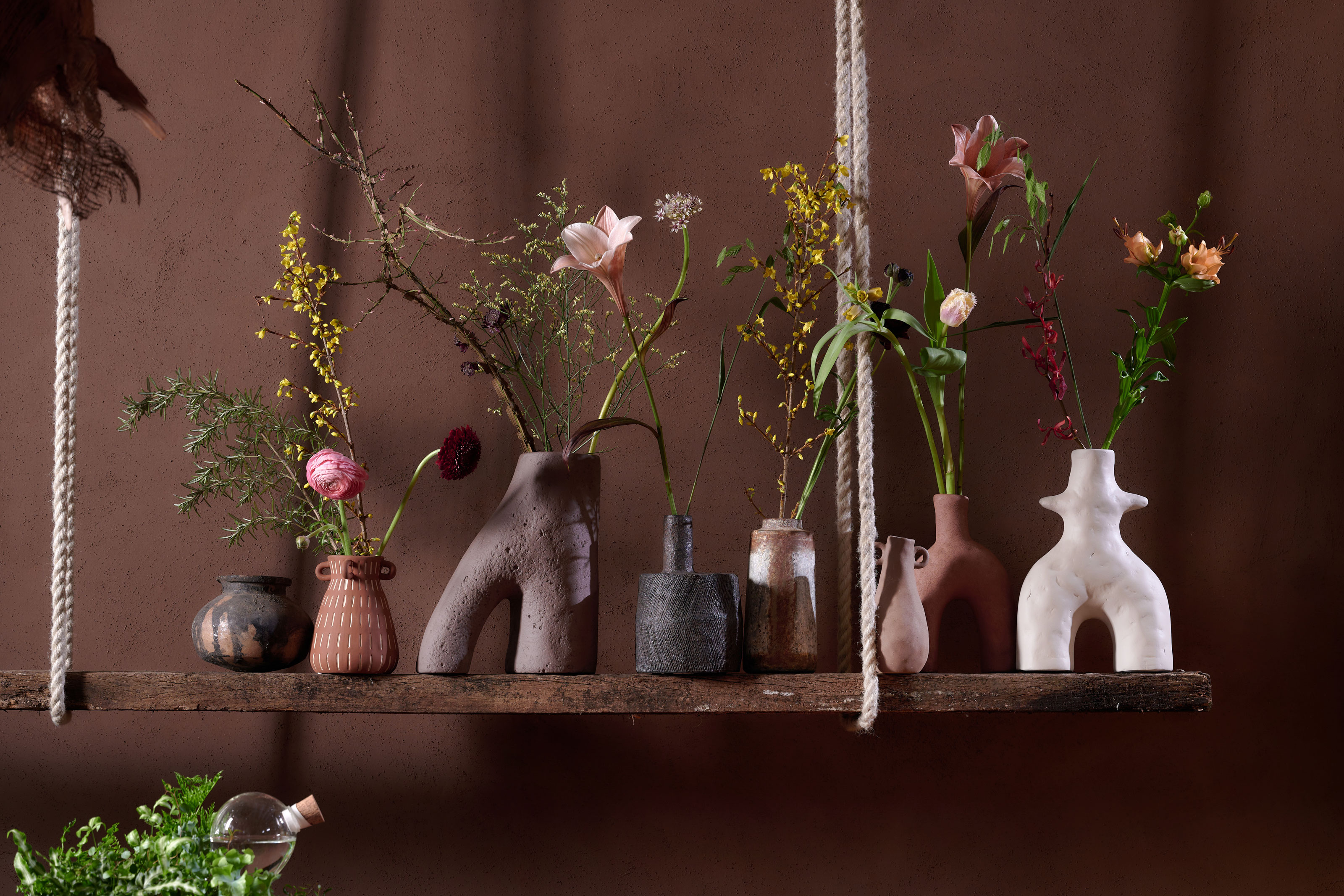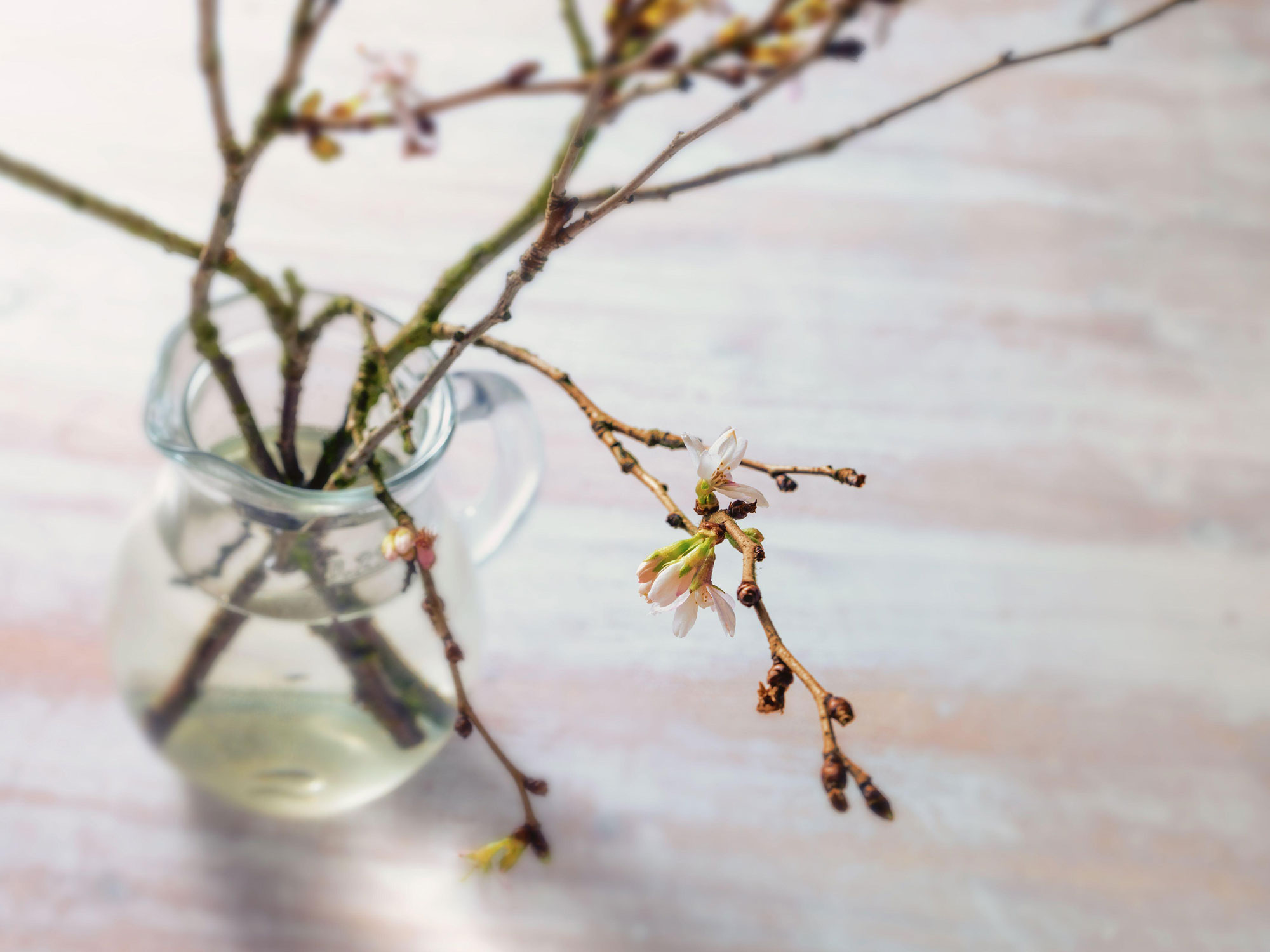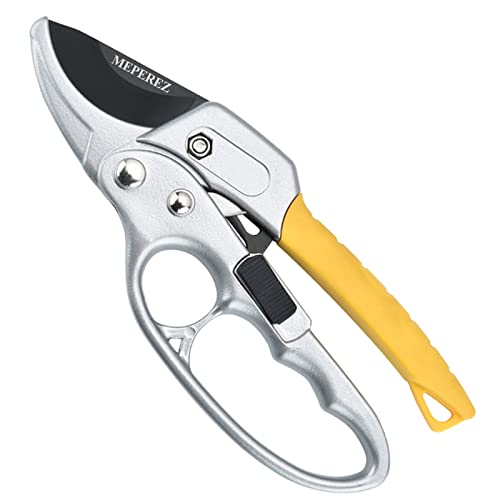7 Flowering Tree Branches You Can "Force" — A Genius Trick to Bring Spring Blooms Indoors Early
One of the simplest and most rewarding ways to get spring flowers into your home is forcing branches of some of your favorite trees and shrubs into blooming early

When you're next taking a winter walk or out in your yard for some fresh air check to see if the buds on trees are beginning to swell. If they are, this means it's the perfect time to cut some branches for indoors and trick them into early flowering. 'Forcing' simply means getting something to bloom ahead of its natural cycle.
To decorate your home by forcing flowering branches first go outside to your yard and see if there's a tree that could do with a trim. If you don't have anything suitable then ask a neighbour or friend if they do, or turn winter walks into foraging expeditions by looking for windfall branches of flowering trees and shrubs you can take home. Always be sure to ask permission before taking out your pruning shears. And remember that all you need is one decent branch to make a display.
Good varieties of flowering trees and shrubs to look out for in a modern garden if you are interested in creating indoor branch arrangements include forsythia, pussy willow, magnolia, and Eastern redbud, as well as fruit tree varieties like apple and cherry. Now find out how easy it is to do.

Why we love the idea of spring flowering branches
Bringing spring flower branches inside is a great way of embracing nature in your home, bringing the outdoors in like a breath of fresh air. The combination of sculptural branches and their pretty flowers can also be used to enhance your interior aesthetic as spring decor.
'Branches are a quick way to add height and presence to any space,' says Annette Thurman, homesteader @azurefarm and author of Simple Country Living. 'If the branch is flowering that's a bonus. For me, the bigger the branch the better. Spring is a favorite time to do this, as this is when there are delicate blooms on branches everywhere.'
It pays to keep your eyes open. Annette recalls seeing a lovely antique shop one spring with the most gorgeous wisteria hanging right outside. 'I asked if I could grab some and the lady was quite excited by my appreciation of her beautiful blooms. I brought my branch home and put it in a glass vase on my counter. For the next ten days it brought me pure joy.'
Simple natural details like this are all it takes to make a home feel special, so take a look at these inspirational ideas for forcing flowering branches.
The Livingetc newsletters are your inside source for what’s shaping interiors now - and what’s next. Discover trend forecasts, smart style ideas, and curated shopping inspiration that brings design to life. Subscribe today and stay ahead of the curve.
How to pick and prep flowering branches for forcing

Forcing can be done as soon as the buds begin to swell in late winter. Be selective by only removing branches that won’t harm the appearance or shape of the tree. If pruning fruit trees in late winter, this is a great opportunity for gathering some of the pruned material for forcing indoors. Select branches that have larger, rounder buds, as these are flower buds, whereas the smaller narrow, pointed buds are usually leaf buds.
Next prepare your branches. 'Woody branches such as forsythia and flowering cherry don’t take up water as readily as green, fleshy flower stems,' explains Antonio Valente, who is based in Ontario, Canada, and has a cutting garden that supplies floral designers with locally and organically grown flowers and foliage. 'So, to open up the vascular system of the branches and encourage water uptake, cut up the end of the stem, roughly an inch or two, with some clean, sharp pruners. Relatively larger branches can be cut twice, essentially cutting an “X” at the bottom of the branch. You can also opt to lightly break up the stem end with a hammer.'
Once your branch is ready put it into a bucket of warm water if you have gathered lots or alternatively it can go straight into the vase if you are just using one. Either change the water every couple of days or alternatively you can add a couple of drops of bleach to the water to keep it clear and free of bacterial growth. Then put the bucket in a warm place indoors. The warmer the location the quicker your branches will come into bloom.
That's all there is to forcing flowering branches – as we mentioned earlier, it's easy.
7 of the best branches to choose for forcing
Shrubs and trees that normally flower in early spring are the easiest to coax into color. Forsythia, pussy willow, and magnolias are usually quickest to respond. Other great choices for forcing include crabapple or apple, flowering cherry, dogwood and redbud.
1. Magnolia

Magnolias come into bloom outdoors in May but you can force branches of magnolia into bloom indoors as early as March. Magnolia branches may take three to five weeks to come into bloom indoors, depending on when you cut them and how warm the room is.
Their prolific clusters of showy blooms come in white, pink or red, and many of them are beautifully scented too. They look spectacular arranged in a tall vase with the foliage trimmed off so you get an unrestricted view of the beautiful flowers.
2. Pussy willow

Pussy willows sum up the spirit of spring like nothing else and these are one of the easiest branches to collect. Wait until the downy catkins have broken out of their casings, then cut lengths that measure at least 12 inches long. Although they don’t flower instead they send up the cutest little gray, furry catkins like silky cat paws.
The branches look delightful in a vase either on their own or arranged together with a selection of spring flowers. These beauties stay looking good for a long time too. If you have some spare branches left over push them into the soil in your outdoor spring container gardens.
3. Forsythia

Forsythia are one of the easiest and most reliable of the spring flowering branches to trick into blooming indoors, especially as your shrub will bounce back nicely once it's been snipped. They’re one of the first flowering shrubs to break into bud in spring, so a great choice for brightening up those bleak months at the beginning of the year.
The blossoms are an intense yellow, which might not be to everyone's taste but if there is ever a time to bring yellow into your life it's in the early months of the year. It shouldn't take much more than a week or two for the forsythia buds to start showing their vibrant, zesty color. The closer to the natural blooming time you cut the branches, the shorter the wait.
4. Cherry

Now is the time for any light, formative pruning of cherry trees that might need doing. It's a good idea to put a bucket to one side and save some of the branches for forcing into flowers indoors. Always take branches from a spot where you can remove a branch without noticeably altering the shape of the tree.
If you want to slow down the bloom time, for example you are planning to use the cherry branches for a special event, put the branches in a cool, dark basement. If you want to speed things up, put them in a warm, bright place. Keep the branches moist by misting regularly, and wait for those first beautiful blossoms to break out.
5. Apple

February and March are a great time to prune apple trees, and any clipped branches can be trimmed up and kept to take indoors for forced blooms. The blossom of the apple tree is really pretty and this is a chance to see it up close. The flowers pop open about three weeks after you bring the branches indoors.
Apple branches are moderately easy to force too. When choosing branches to use, look for ones with lots of flower buds as this will mean more flowers for your indoor display.
6. Redbud

If you’re new to forcing branches, redbud is an great one to start with. This is tree that changes color with the seasons, and this means pink blooms in spring. Two weeks after snipping your branches you'll be rewarded by masses of pretty pink petals that look fabulous massed up as a solo act.
Keep the branches in a cool room out of direct sunlight and change the water every other day. When color appears on the buds or the foliage begins to unfurl, arrange the branches in a vase and display them in a cool room out of direct sunlight. Remove any buds or twigs that will be beneath the surface of the water in the vase, as this will prevent the water discoloring and becoming stagnant.
7. Dogwood

Dogwoods are stars of the winter garden due to their vibrant stems, which come in a range of colors including yellow, red and orange. But they're not so well known for their flowers, which are beautiful nevertheless and come in shades of pink and white. The branches add color and texture to elegant indoor arrangements.
Also known as Cornus, these shrubs benefit from being lightly pruned in late winter so it's the ideal time to save any clippings for forcing indoors. Dogwoods are slow to heal after pruning so care should be taken to keep the nice shape they form naturally.
How long does it take for branches to come into bloom?
It varies in terms of how long it takes for forced branches to come into bloom, depending on the type of tree or shrub, when you gather it, and how warm or cool it is in your home. Another thing to factor in is the closer it is to the plant’s normal outdoor flowering period, the less time it takes to force the cut branches indoors.
Start in February and you will be waiting 2-3 weeks to see blooms as the buds are a little tighter. By March or April you'll be waiting a week to 10 days. Once they're in bloom in a vase you'll get a good 2 weeks out of forced branches, as long as you don't expose them to strong sunlight, which will quickly cause them to fade.
If you feel your branches are slow coming into bloom try misting them and covering them with clear plastic bag, which should help speed things up.
You'll soon find that forcing flowering branches is easy, then you can push out the search for different varieties to try.
Lifestyle journalist Sarah Wilson writes about garden design and landscaping trends. She has studied introductory garden and landscape design, and also has an RHS Level 2 qualification in the Principles of Plant Growth and Development. She is a regular contributor to Livingetc.com, and also writes for Homes & Gardens, Country Living, Country Homes & Interiors, and Modern Gardens magazines. Her first job was at Elle magazine, during which time a trip to the beautiful La Colombe d'Or in St-Paul-de-Vence led to an interest in writing about all things botanical. Later as lifestyle editor at Country Homes & Interiors magazine one of the highlights were the run of captivating country gardens that were featured.


